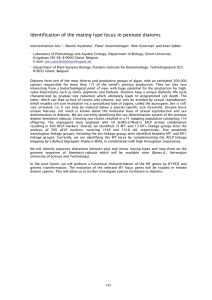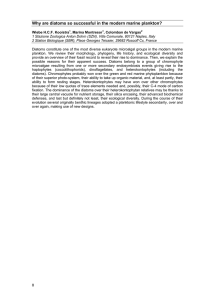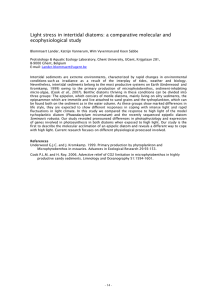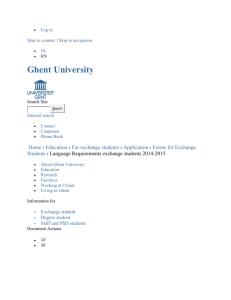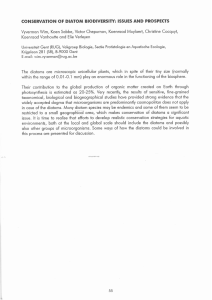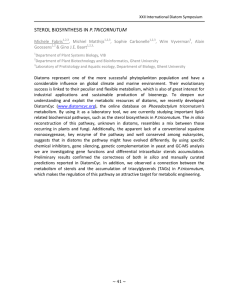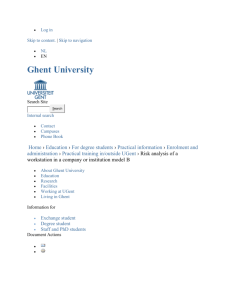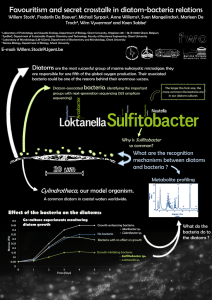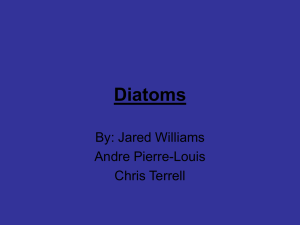Diatom-bacteria int tions: Symbiosis on the move erac
advertisement
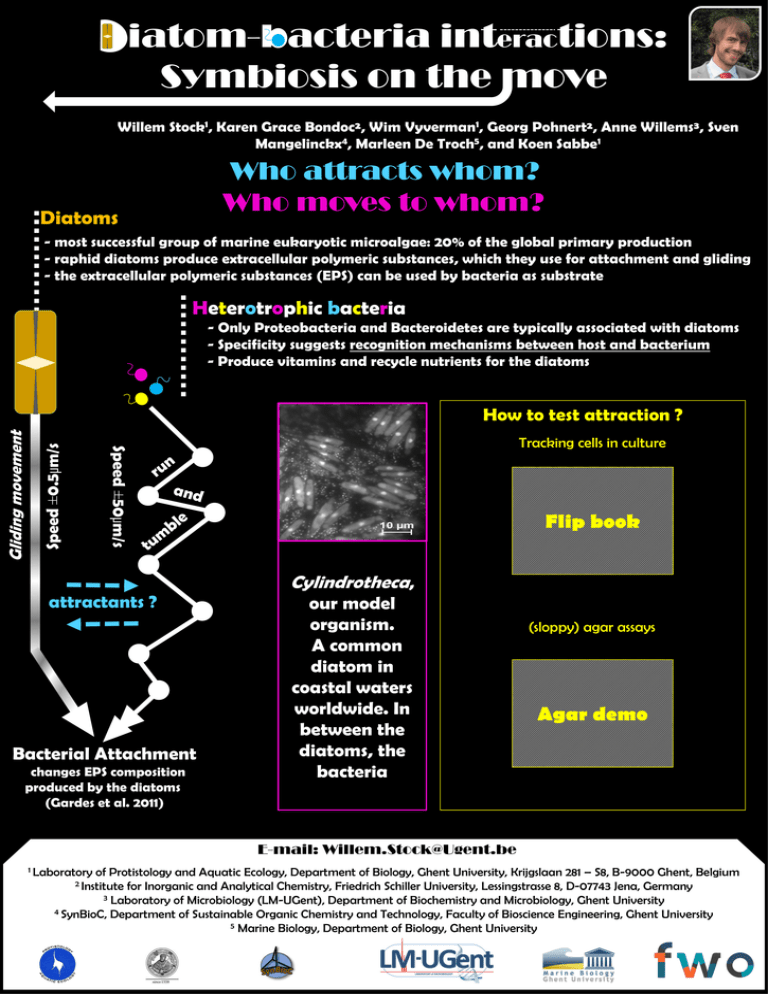
Diatom-bacteria interactions: Symbiosis on the move Willem Stock1, Karen Grace Bondoc², Wim Vyverman1, Georg Pohnert², Anne Willems³, Sven 4 5 1 Mangelinckx , Marleen De Troch , and Koen Sabbe Who attracts whom? Who moves to whom? Diatoms - most successful group of marine eukaryotic microalgae: 20% of the global primary production - raphid diatoms produce extracellular polymeric substances, which they use for attachment and gliding - the extracellular polymeric substances (EPS) can be used by bacteria as substrate Heterotrophic bacteria - Only Proteobacteria and Bacteroidetes are typically associated with diatoms - Specificity suggests recognition mechanisms between host and bacterium - Produce vitamins and recycle nutrients for the diatoms Speed ±0.5µm/s Tracking cells in culture Speed ±50µm/s Gliding movement How to test attraction ? attractants ? Bacterial Attachment changes EPS composition produced by the diatoms (Gardes et al. 2011) Flip book Cylindrotheca, our model organism. A common diatom in coastal waters worldwide. In between the diatoms, the bacteria (sloppy) agar assays Agar demo E-mail: Willem.Stock@Ugent.be 1 Laboratory of Protistology and Aquatic Ecology, Department of Biology, Ghent University, Krijgslaan 281 – S8, B-9000 Ghent, Belgium 2 Institute for Inorganic and Analytical Chemistry, Friedrich Schiller University, Lessingstrasse 8, D-07743 Jena, Germany 3 Laboratory of Microbiology (LM-UGent), Department of Biochemistry and Microbiology, Ghent University 4 SynBioC, Department of Sustainable Organic Chemistry and Technology, Faculty of Bioscience Engineering, Ghent University 5 Marine Biology, Department of Biology, Ghent University
